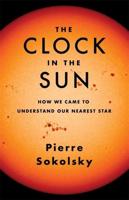Publisher's Synopsis
Presenting the fundamental topics in glass science and technology, this concise introduction includes glass formation, crystallization, and phase separation. Glass structure models, with emphasis on the oxygen balance method, are presented in detail. Several chapters discuss the viscosity, density, thermal expansion, and mechanical properties of glasses as well as their optical and magnetic behavior and the diffusion of ions, atoms, and molecules and their effect on electrical conductivity, chemical durability, and other related behavior. In addition to the effects of atomic structure on the properties of glasses, the effects of phase separation, crystallization, and water content, which are neglected in most texts, are discussed extensively. Glass technology is addressed in chapters dealing with the raw materials for producing glasses, batch calculations, and the melting and fining processes. The compositions, properties, and production of commercial glasses are also presented. A chapter is devoted to the use of thermal analysis in the study of glasses, including their crystallization behavior. This expanded, third edition, includes new chapters on doped vitreous silica and the, often overlooked, role of halides on glass formation and properties. In addition, solutions to all of the exercises at the ends of chapters are included for the first time in this edition.
This introductory text is ideal for undergraduates in materials science, ceramics, or inorganic chemistry. It will also be useful to the graduate student, engineer, or scientist seeking basic knowledge of the formation, properties, and production of glass in support of their work.








